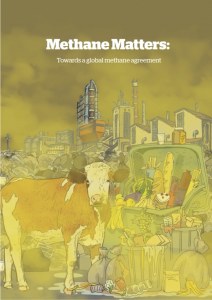Methane Matters: Towards a global methane agreement
Ahead of CoP27, EIA and campaign partners Changing Markets and GAIA released today a thought starter on a new global methane agreement, which sets out a framework for collective international coordination and collaboration on methane emissions.
Methane is the second most important greenhouse gas, 80 times more potent than CO2 over a 20-year timespan, responsible for 25% of global warming.
Anthropogenic methane emissions come from three major sectors: energy (35%), agriculture (40%) and waste (20%). UN Environment’s Global Methane Assessment (GMA) has found that “global methane emissions must be reduced by between 40–45% by 2030,” 30% of which could be achieved by readily available measures.
The Global Methane Pledge, launched last year at COP26 in Glasgow was a first step in the right direction. However, the Pledge does not include the key components to deliver on the needed objectives, including monitoring and reporting, national action plans and technical and financial assistance.
To ensure this deep reduction of methane emissions in the three sectors, EIA calls on countries to work towards quickly adopting a global methane agreement, one that provides an overarching framework to measure progress towards necessary reductions in 2030 and beyond, while ensuring international cooperation and financial assistance, enabling domestic action and promoting implementation.
This thought starter presents the three pillars on which this new agreement should be based on (monitoring and reporting, mitigation and financial and technical assistance), identifying the key measures and actors to implement and strengthen the Pledge.
EIA will be promoting this report at COP27 in Sharm El Sheikh, to encourage policy makers to initiate negotiations to develop a global methane agreement.


